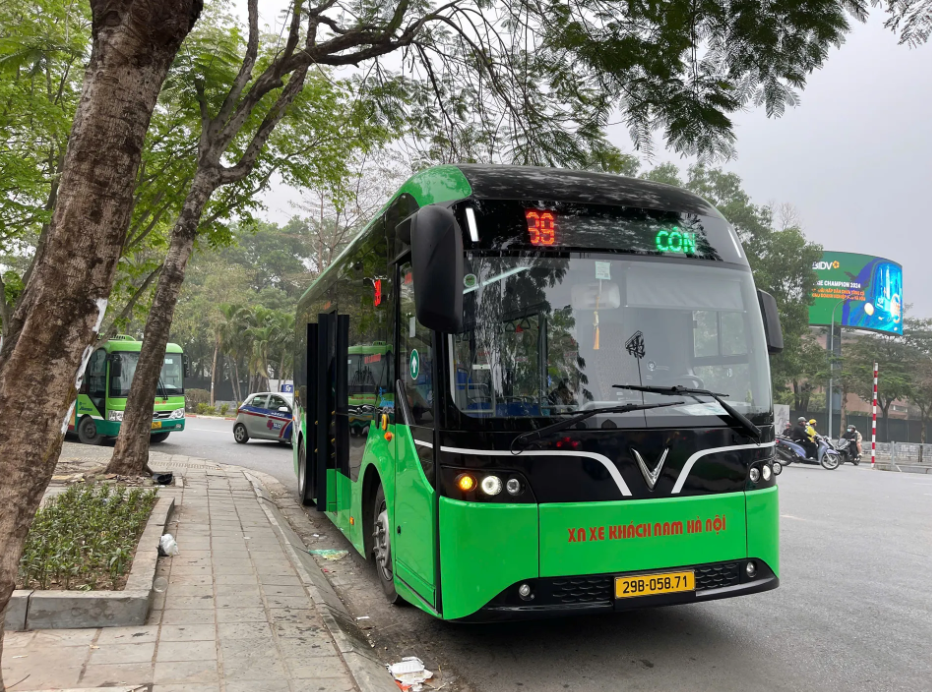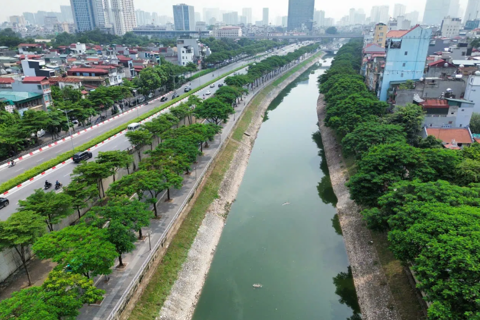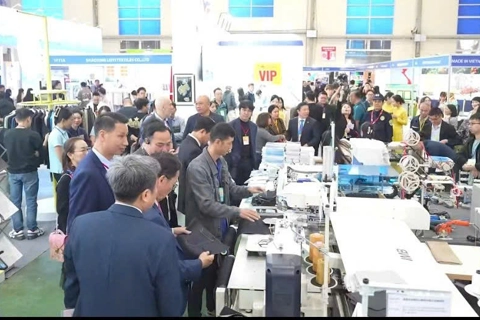Hanoi plans to roll out electric buses linking urban rail by 2030
The move aims to improve service quality and increase the volume of public passenger transport by bus across the city.
THE HANOI TIMES — Hanoi will focus on developing electric and green-energy bus routes that connect to urban rail lines, new urban areas, the National Exhibition and Convention Center, and museums during the 2025-2030 period.

Hanoi is promoting green buses in the city. Photo: Pham Cong/The Hanoi Times
The goal is outlined in Decision No. 2066, issued by the Hanoi People’s Committee on April 16, which approved a plan to enhance the city’s bus network.
Subsequently, between 2031 and 2035, the development of Hanoi's bus network will be in line with the expansion of road transport infrastructure, with more stations and transfer points being built.
New bus routes will be launched to connect the centers of satellite towns directly with transfer points located along the ring roads of the central urban area. Additionally, routes will be expanded based on planned bus rapid transit (BRT) and urban rail systems to gradually build up public demand for mass transit.
In parallel, the city will accelerate the transition to electric and green energy buses. Investments will be made to upgrade bus infrastructure, renew the bus fleet, rebrand and repaint vehicles, improve the quality of the workforce, and implement an integrated ticketing system.
According to the Hanoi People's Committee, the bus network has been extensively expanded in recent years, becoming the backbone of public transportation. The city has introduced a series of incentive policies to encourage the use of public transport, offering more favorable conditions than other localities nationwide. Various ticket options are available to meet the needs of different passenger groups.
Initial environmentally friendly buses have been deployed, with 348 clean energy buses currently in service, representing 18.5% of the total fleet. Vehicle quality has improved, with a greater variety tailored to local infrastructure conditions. Bus service information is now more accessible through apps such as Tim Buyt, Busmap, and Vinbus, which help passengers easily find routes and schedules.
However, there remain many challenges, including high subsidy budgets for bus services, slow bus speed with an average operating speed of only 16.6 km/h in the city center, making the service less attractive to passengers. As a result, ridership has not yet met expectations.
The share of high quality clean buses remains low (only 18.5%) due to limited access to supportive policies and financing for green fleet upgrades while the lack of specific mechanisms for preferential loans continues to be a barrier for transport operators.
Bus infrastructure remains inadequate and not convenient for the public due to limited land for building terminals, transfer points, and priority lanes.
The current bus network does not fully meet travel demand. Some routes are underperforming due to suboptimal network design, while others have mismatches between frequency, capacity, and actual passenger needs.
Based on current travel demand and the city's public transport development plan, Hanoi proposes to adopt a conservative growth scenario. The modal share of public transport is expected to reach 20% by 2025, 30% by 2030, and 40% by 2035.
Source: The Hanoi People's Committee's Decision 2066/QD-UBND dated April 16, 2025











